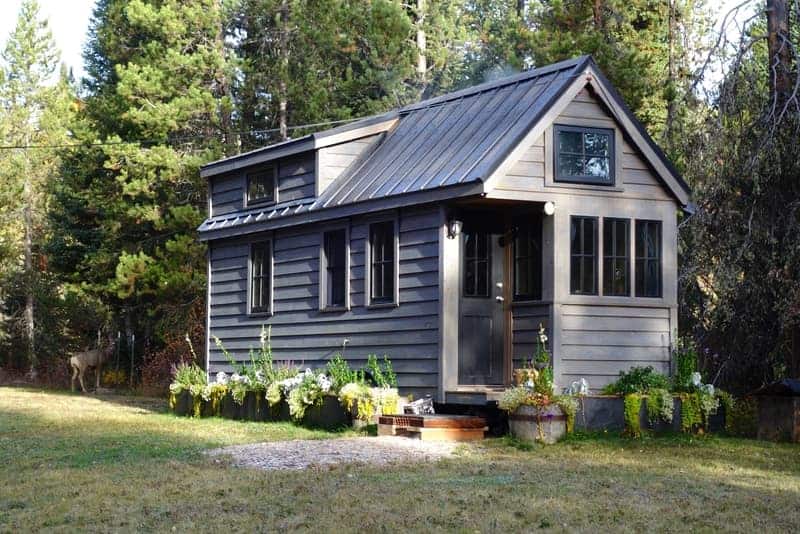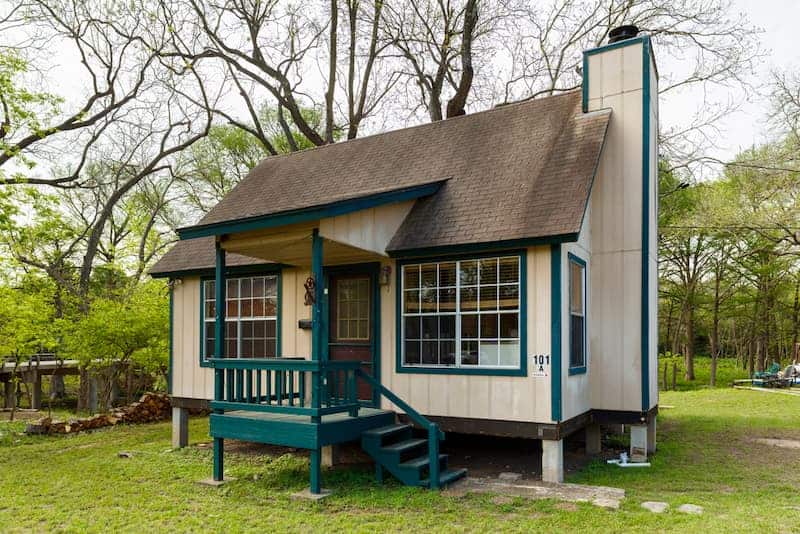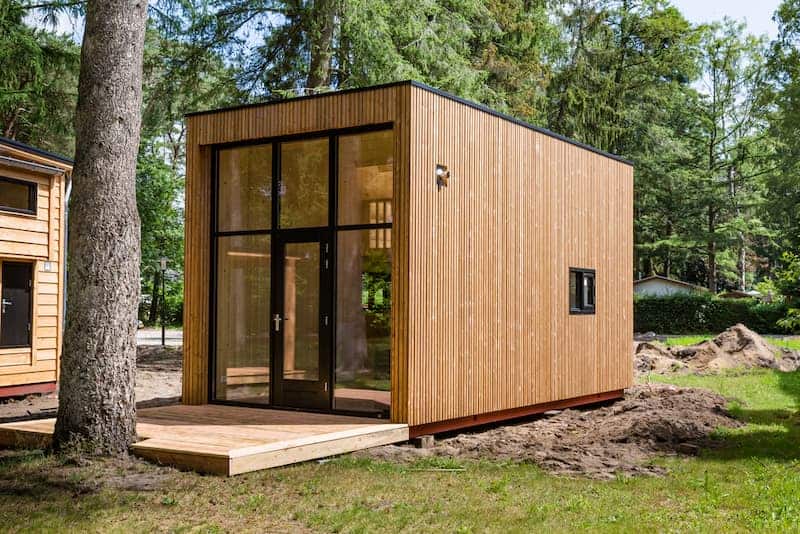The tiny house movement has steadily gained momentum over the past few years, and it’s not hard to see why. With skyrocketing housing costs and a growing desire for simplicity, many people are rethinking their definition of a dream home. But is tiny house living right for you? In this article, we will explore the various pros and cons of downsizing to a tiny home.
On one hand, tiny homes offer numerous benefits, such as financial freedom, a more environmentally-friendly lifestyle, and the opportunity to live a minimalist life. You’ll likely save money on your mortgage, utility bills, and maintenance costs, enabling you to direct your resources towards other priorities, like travel or early retirement.
However, there are also some downsides to tiny house living that are worth considering. For instance, limited space can be challenging, forcing you to find creative storage solutions and decide what items truly hold value.
Finding the perfect location and working through zoning regulations can be tricky. We’ll delve into these aspects further to help you decide whether the tiny house lifestyle aligns with your goals and values.
Read: 15 Splendid Ways to Make a Minimalist Home
Understanding Tiny House Living
What is Tiny House Living?
Tiny house living is a lifestyle where you choose to live in a significantly smaller space than an average-sized home. Generally, a tiny house is between 100 and 400 square feet, which allows for a more compact and efficient use of space. By embracing this minimalist lifestyle, you may find that it creates opportunities to:
- Save money on housing costs
- Reduce your ecological footprint
- Simplify your life
Historical Background of Tiny Houses
| Era | Tiny House Movement Origins |
|---|---|
| 19th Century | Henry David Thoreau’s book, Walden |
| 20th Century | Architect Sarah Susanka’s book, The Not So Big House |
During the 19th century, the idea of living in a smaller, more sustainable space was introduced by Henry David Thoreau in his book, Walden. This laid the foundation for the modern tiny house movement.
In the 20th century, architect Sarah Susanka popularized “living large in a small space” with her book, The Not So Big House. Many people found her philosophy appealing and began to experiment with designing and building their own tiny homes.
Finally, the 2008 economic crisis saw a rise in the popularity of tiny houses as people sought ways to reduce debt and find affordable housing solutions. Nowadays, numerous tiny house communities, TV shows, documentaries, and books explore this unique lifestyle’s benefits and challenges.

Advantages of Tiny House Living
Affordability
One of the main reasons you might consider tiny house living is to save money. You’ll find that the cost of building or purchasing a tiny home is significantly lower than that of a traditional house.
Additionally, the ongoing expenses, like property taxes, utility bills, and maintenance costs, are generally lower as well. This can free up some of your finances, allowing you to allocate them to other areas of your life.
Sustainability
Tiny houses promote a sustainable way of living. You consume less energy in terms of heating, cooling, and lighting due to the smaller space. Many tiny homes are also built with eco-friendly materials, reducing your carbon footprint. Plus, living in a tiny house encourages the use of energy-efficient appliances and features, like solar panels.
Mobility
A remarkable benefit that tiny house living provides is mobility. If you choose a home on wheels, you can easily relocate whenever you want. This is great for those who enjoy the freedom of exploring new places or those with job changes that require them to move often.
Simple Lifestyle
Embracing a tiny house lifestyle means you’ll adopt a simpler way of living. With limited space, you will inevitably focus more on the essentials and prioritize your belongings. This could lead to a more stress-free and focused life that lets you concentrate on what truly matters.
Less Clutter
Living in a tiny house requires careful organization and thoughtful storage solutions due to the limited space available. This means you will be more selective with what you bring into your home. Having fewer belongings reduces clutter and maintains a cleaner living environment.
Travel With Home
If you love to travel, tiny house living can give you the unique opportunity to bring your home with you on your adventures. Having a home on wheels gives you the independence to travel and explore different destinations, all while enjoying the comforts and familiarities of your own space.

Disadvantages of Tiny House Living
Limited Space
Tiny houses obviously have limited space, making it challenging to fit all your belongings. You’ll have to prioritize your items and purge anything that isn’t necessary.
This can be a downside if you have a lot of possessions you’re attached to or are unwilling to part with certain items. The limited space can make entertaining guests or accommodating overnight visitors difficult.
Zoning and Legal Issues
Zoning and legal issues are common with tiny houses. Some municipalities have strict minimum size requirements for houses, making it tough to find a place to park your tiny house legally.
Research your local laws and regulations to avoid any legal problems. Finding a suitable location to build or park your tiny home is important, such as private land or a designated tiny house community.
Limited Privacy
In a tiny house, privacy can be scarce. If you’re living with family members or roommates, the close quarters can make it difficult to find space for solitude.
Furthermore, thin walls can cause noise throughout your tiny home, limiting privacy. Consider whether the potential lack of privacy is a deal breaker for you before committing to tiny house living.
Frequent Maintenance
Although smaller homes can be easier to maintain in some ways, tiny houses often require more frequent maintenance. This is due to the compact nature of tiny houses, which can lead to quicker wear and tear on appliances, fixtures, and other aspects of the property. Be prepared to invest time and resources into maintaining your tiny home.
House Resale Value
One potential downside of tiny house living is the uncertainty around their resale value. While the tiny house movement has grown in popularity, it’s still a niche market, which could make it challenging to sell your tiny home in the future.
Keep this in mind if you’re considering a tiny house as an investment or if you plan to move on from tiny living someday.
Making the Transition to a Tiny House
Planning and Designing
Embracing tiny house living starts with thoughtful planning and designing. You need to consider your lifestyle, budget, and location preferences. Create a list of priorities for your tiny home, such as the need for a home office, storage space, or outdoor living area. Collaborate with a professional architect or designer, or choose a premade tiny house plan that suits your needs.
Building or Purchasing
Once you’ve settled on a design, it’s time to decide whether to build or purchase your tiny house. If you’re skilled and confident in your abilities, you can build it yourself. Alternatively, you can hire a professional builder or purchase a prefabricated tiny house. Weigh the pros and cons of each option:
| Option | Pros | Cons |
|---|---|---|
| DIY Build | Cost-effective, Customizable | Time-consuming, Requires skills and tools |
| Hire a Professional Builder | Quality assurance, Faster construction | More expensive, Limited customization |
| Prefabricated Tiny House | Quick setup, Quality control | Less customization, May not fit specific needs |
Read: 10 Staggering Reasons To Opt Out of Junk Mail
Downsizing Possessions
A crucial aspect of the transition to a tiny house is downsizing your possessions. Start by taking inventory of your belongings and determine which items are essential and which can be sold, donated, or discarded. Keep these tips in mind:
- Utilize multipurpose furniture and appliances to save space.
- Consider digital alternatives for physical items (books, movies, etc.).
- Practice minimalism to avoid clutter and maintain a clean, organized living space.
Remember, making the transition to a tiny house can be an exciting and rewarding experience, particularly when approached with a well-thought-out plan and a positive mindset.
Final Thoughts
Pros:
- Affordability: Tiny house living can be a budget-friendly option for those looking to downsize or save on housing expenses.
- Environmental impact: Smaller houses typically require less energy and resources to build and maintain, which can benefit the environment.
- Simplicity: Living in a tiny house can encourage you to lead a more minimalist lifestyle, cutting back on material possessions and focusing on what truly matters.
Cons:
- Limited space: One of the most obvious drawbacks to tiny home living is the lack of space. It can be a challenge to accommodate a family, larger furniture, or copious amounts of belongings.
- Zoning restrictions: Many areas have strict zoning regulations that can make it difficult to legally build and reside in a tiny house.
- Resale value: Due to the niche nature of the tiny house market, you may struggle to sell your home if you decide to move on.
Overall, tiny house living isn’t for everyone, but it can offer a unique and fulfilling lifestyle for those who value simplicity, sustainability, and financial freedom. It requires adapting to a compact life and understanding the trade-offs, such as limited space and potential zoning challenges. Consider your needs and preferences before deciding if a tiny house is right for you.
Frequently Asked Questions
How can one prepare for the tiny house lifestyle?
To prepare for the tiny house lifestyle, declutter your belongings and determine what you truly need. Assess your daily routines and prioritize items that serve multiple purposes. Consider short-term rentals or staying in a tiny house community to experience the lifestyle firsthand.
What are common problems with tiny houses?
Some common problems with tiny houses include limited storage space, difficulties finding a legal parking spot, and increased maintenance due to the smaller scale. Additionally, customized tiny homes can be costly, and obtaining financing for a tiny house can be challenging.
What is the lifespan of a tiny house?
The lifespan of a tiny house is typically around 10 to 15 years, but can potentially last longer with proper care and maintenance. Lifespan depends on the materials used, quality of construction, and regular upkeep. Some tiny house owners also choose to rebuild or upgrade their homes over time to extend their use.
Is it more cost-effective to live in a tiny house?
Living in a tiny house can be more cost-effective for some people, as upfront costs and ongoing expenses are generally lower than traditional homes. When you live in a tiny house, you’re likely to spend less on utilities, property taxes, and maintenance. However, factors such as land prices, local regulations, and financing options can impact the overall cost-effectiveness of tiny house living.






